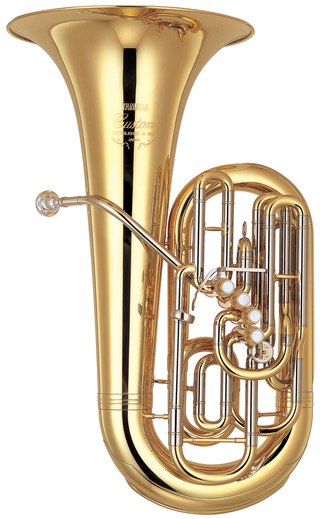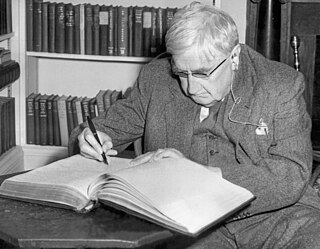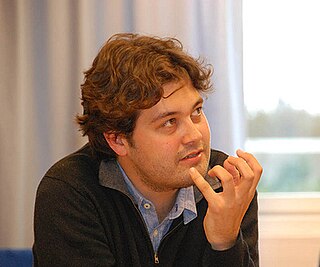Related Research Articles

The tuba is the largest and lowest-pitched musical instrument in the brass family. As with all brass instruments, the sound is produced by lip vibration – a buzz – into a mouthpiece. It first appeared in the mid-19th century, making it one of the newer instruments in the modern orchestra and concert band, and largely replaced the ophicleide. Tuba is Latin for "trumpet".

A string orchestra is an orchestra consisting solely of a string section made up of the bowed strings used in Western Classical music. The instruments of such an orchestra are most often the following: the violin, which is divided into first and second violin players, the viola, the cello, and usually, but not always, the double bass.

Sergei Rachmaninoff's Piano Concerto No. 3 in D minor, Op. 30, was composed in the summer of 1909. The piece was premiered on November 28 of that year in New York City with the composer as soloist, accompanied by the New York Symphony Society under Walter Damrosch. The work has the reputation of being one of the most technically challenging piano concertos in the standard classical piano repertoire.

The Piano Concerto No. 5 in E-flat major, Op. 73, known as the Emperor Concerto in English-speaking countries, is a concerto composed by Ludwig van Beethoven for piano and orchestra. Beethoven composed the concerto in 1809 under salary in Vienna, and he dedicated it to Archduke Rudolf, who was his patron, friend, and pupil. Its public premiere was on 28 November 1811 in Leipzig, with Friedrich Schneider as the soloist and Johann Philipp Christian Schulz conducting the Gewandhaus Orchestra. Beethoven, usually the soloist, could not perform due to declining hearing.

Sir Edward Elgar's Symphony No. 1 in A♭ major, Op. 55 is one of his two completed symphonies. The first performance was given by the Hallé Orchestra conducted by Hans Richter in Manchester, England, on 3 December 1908. It was widely known that Elgar had been planning a symphony for more than ten years, and the announcement that he had finally completed it aroused enormous interest. The critical reception was enthusiastic, and the public response unprecedented. The symphony achieved what The Musical Times described as "immediate and phenomenal success", with a hundred performances in Britain, continental Europe and America within just over a year of its première.

The Symphony No. 2 in E minor, Op. 27, is a four-movement composition for orchestra written from October 1906 to April 1907 by the Russian composer Sergei Rachmaninoff. The premiere was performed at the Mariinsky Theatre in Saint Petersburg on 26 January 1908, with the composer conducting. Its duration is approximately 60 minutes when performed uncut; cut performances can be as short as 35 minutes. The score is dedicated to Sergei Taneyev, a Russian composer, teacher, theorist, author, and pupil of Pyotr Ilyich Tchaikovsky. The piece remains one of the composer's most popular and best known compositions.
Ralph Vaughan Williams dedicated his Symphony No. 4 in F minor to Arnold Bax.
A London Symphony is the second symphony that Ralph Vaughan Williams composed. The work is sometimes referred to as Symphony No. 2, though the composer did not designate that name for the work. First performed in 1914, the original score of this four-movement symphony was lost and subsequently reconstructed. Vaughan Williams continued revisions of the work into its final definitive form, which was published in 1936.
Sinfonia antartica is the Italian title given by Ralph Vaughan Williams to his seventh symphony, first performed in 1953. It drew on incidental music the composer had written for the 1948 film Scott of the Antarctic.
Ralph Vaughan Williams composed his Symphony in E minor, published as Symphony No. 6, in 1944–47, during and immediately after World War II and revised in 1950. Dedicated to Michael Mullinar, it was first performed, in its original version, by Sir Adrian Boult and the BBC Symphony Orchestra on 21 April 1948. Within a year it had received some 100 performances, including the U.S. premiere by the Boston Symphony Orchestra under Serge Koussevitzky on 7 August 1948. Leopold Stokowski gave the first New York performances the following January with the New York Philharmonic and immediately recorded it, declaring that "this is music that will take its place with the greatest creations of the masters." However, Vaughan Williams, very nervous about this symphony, threatened several times to tear up the draft. At the same time, his programme note for the first performance took a defiantly flippant tone.

The Symphony No. 9 in E minor was the last symphony written by the English composer Ralph Vaughan Williams. He composed it during 1956 and 1957, and it was given its premiere performance in London by the Royal Philharmonic Orchestra conducted by Sir Malcolm Sargent on 2 April 1958, in the composer's eighty-sixth year. The work was received respectfully but, at first, without great enthusiasm. Its reputation has subsequently grown, and the symphony has entered the repertoire, in the concert hall and on record, with the majority of recordings from the 1990s and the 21st century.
The Piano Concerto No. 2 in G major, Sz. 95, BB 101 of Béla Bartók is a musical composition for piano and orchestra. The work, which was composed between 1930 and 1931, is notorious for being one of the most difficult pieces in the repertoire.
John Fletcher was an English tubist and French Horn player.
The Symphony No. 1 in B♭ minor is one of two symphonies by the English composer William Walton. The composer had difficulty in completing the work, and its first public performance was given without the finale, in 1934. The complete four-movement work was premiered the following year.
The Symphony No. 3 by Arnold Bax was completed in 1929. It was dedicated to Sir Henry Wood and is perhaps the most performed and most immediately approachable of Bax's symphonies.

The euphonium repertoire consists of solo literature and parts in band or, less commonly, orchestral music written for the euphonium. Since its invention in 1843, the euphonium has always had an important role in ensembles, but solo literature was slow to appear, consisting of only a handful of lighter solos until the 1960s. Since then, however, the breadth and depth of the solo euphonium repertoire has increased dramatically.

Lawrence Power is a British violist, born 1977, noted both for solo performances and for chamber music with the Nash Ensemble and Leopold String Trio.
The Concerto Fantasy for Two Timpanists and Orchestra is a double timpani concerto written by Philip Glass in 2000. It is paired with the Cello Concerto on Vol. I of Glass' Concerto Project, a set of eight concerti by the composer. A typical performance of the work lasts 25–28 minutes. It was written for Jonathan Haas and later recorded by Evelyn Glennie, and was premiered by Haas and Svet Stoyanov with the American Symphony Orchestra in Avery Fisher Hall, Lincoln Center, conducted by Leon Botstein. The work was commissioned jointly by the American Symphony Orchestra, the Peabody Symphony, the Milwaukee Symphony, the St. Louis Symphony and the Phoenix Symphony. In 2004, a transcription for wind ensemble was written by Mark Lortz, which debuted at Peabody Institute in 2005.

Symphony No. 4, "A Vitória" (Victory) is a composition by the Brazilian composer Heitor Villa-Lobos, written in 1919. A recording conducted by the composer lasts just over thirty minutes.
The Concerto for Piano and Orchestra is a piano concerto by the British composer Thomas Adès. The work was commissioned by the Boston Symphony Orchestra for the pianist Kirill Gerstein and was completed in 2018. It was first performed by Gerstein and the Boston Symphony Orchestra conducted by the composer at Symphony Hall, Boston, on 7 March 2019. The piece is Adès's second piano concerto following In Seven Days in 2008.
References
- ↑ Bevan, Clifford; Kridel, Craig (Winter 2008). "Vaughn William's Tuba Concerto: Composition and First Performance" (PDF). ITEA Journal . 35 (2): 62–63.
- ↑ Hussey, Dyneley (October 1956). "The Musician's Gramophone". The Musical Times . 97 (1364): 524–526. doi:10.2307/937545.
- ↑ Taylor, Alexander Raymond (31 May 2018). The Vaughan Williams Tuba Concerto: Its Inception, and Influence on Selected Twentieth Century Works for the Tuba by British Composers (DMA thesis). University of Kansas.
- ↑ Catelinet, Philip (Fall 1986). "The Truth About the Vaughan Williams Tuba Concerto". ITEA Journal. 14 (2).
- ↑ Laffler, William D. (29 April 1978). "Tuba concerto for 'oom-pah' lovers". Mansfield News Journal . p. 16.
- ↑ Parmenter, Ross (8 November 1955). "A Tuba Concerto: Bell Plays New Work by Vaughan Williams". New York Times . p. 37.
- ↑ Arlen, Walter (20 December 1966). "Tuba Concerto Hit at Philharmonic". The Los Angeles Times . pp. 14V.
- ↑ Ottaway, Hugh (July 1973). "Vaughn Williams: Overture, The Wasps; Three Portraits from The England of Elizabeth; Tuba Concerto; Violin Concerto. John Fletcher/James Buswell/LSO/Pr". The Musical Times. 114 (1565): 711. doi:10.2307/956495.